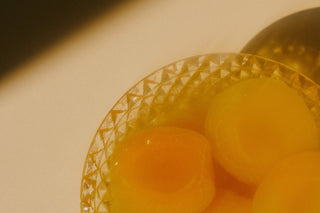If you drink decaf coffee, you’ve probably come across terms like Swiss Water Process, ethyl acetate decaf and perhaps even the CO₂ method. While the Swiss Water Process gets the majority of the attention, the ethyl acetate method is, in our experience, a superior way to decaffeinated coffee.
At Do Coffee Roasters, we’re passionate about demystifying decaf and showing you how it can be every bit as satisfying as its fully caffeinated counterpart. So let’s dig into how the ethyl acetate decaffeination process works, why it’s sometimes called “naturally decaffeinated” or “Sugarcane Process”, and what it means for your cup of coffee.
What Is the Ethyl Acetate Decaf Method?
The ethyl acetate (EA) method is a solvent-based decaffeination process. That might sound unnatural and made using chemicals, but in reality it relies on a compound found in many fruits and vegetables.
Ethyl acetate is an ester that occurs naturally in bananas, apples, and even coffee cherries. In the coffee industry, it’s often sourced from sugarcane, which is why you’ll sometimes hear people refer to it as the “Sugarcane Process”.
What makes EA so good for use in decaf production is how selectively it binds to caffeine molecules leaving behind much of the bean’s natural character. Methods like the Swiss Water Process tend to be less selective, washing out some of the desirable coffee compounds as well as the caffeine.
Step-by-Step: How the Ethyl Acetate Process Works
Here’s a simplified look at how your favourite decaf beans go through the EA method:
-
Steaming the Beans
Raw (green) coffee beans are first gently steamed to open up their pores. This makes it easier for caffeine to be extracted. -
Ethyl Acetate Wash
The beans are repeatedly washed in a water solution that contains ethyl acetate. The EA molecules bond with caffeine and pull it out of the beans. -
Rinsing and Steaming Again
After the caffeine has been removed, the beans are rinsed and steamed once more to clear out any trace of ethyl acetate. -
Drying
Finally, the beans are dried back to their normal moisture level, ready to be roasted and brewed into your next decaf cup. - The end result? Coffee beans that are up to 97% caffeine-free while keeping their original aroma and flavour intact.
Is Ethyl Acetate Safe?
Yes—completely. This is one of the most common questions people have when they hear the words “solvent” and “chemical.” Bear in mind that even water sounds unappealing when we use its chemical name - dihydrogen oxide.
Ethyl acetate is a naturally occurring ester formed from alcohol (ethanol) and vinegar (acetic acid) and considered safe for use in food and beverages by the FDA, the European Food Safety Authority, and other global regulators. Because EA has a low boiling point, when the beans are rinsed and steamed after processing the final product contains no measurable EA - less than 10ppm. If you’ve ever eaten a banana or sipped a glass of wine, you’re consuming ethyl acetate—it occurs naturally in both. A banana typically contains 200ppm - 1/20th the amount contained in decaf coffee.
Why Choose the Ethyl Acetate Method?
There are a few key reasons why roasters and drinkers appreciate this approach:
- “Natural” Appeal: Because EA can be derived from sugarcane or fruit, the process is sometimes referred to as “naturally decaffeinated.” While that term can be a little fuzzy, it reflects the fact that the compound isn’t synthetic.
- Flavor Retention: Compared to harsher methods, the EA process tends to preserve more of the coffee’s inherent sweetness and body. Many sugarcane-processed decafs have a smooth, caramel-like profile and a fruity sweetness.
- Sustainability: Using sugarcane-derived EA is relatively low-impact compared to some other industrial solvents, making it attractive to producers in coffee-growing regions.
How Does It Compare to Other Methods?
- Swiss Water Process: This method relies on water and carbon filters, making it entirely chemical-free. It’s popular among people attracted to the idea that it only uses water, but in our experience cup quality can be negatively impacted. Most problematic from our point of view is that all Swiss Water Process coffees are decaffeinated in Canada, which means that the coffee needs to be shipped from its origin in Africa, Asia or South America to Canada and back to the end user. This undermines the freshness of the coffee.
- CO₂ Method: Uses pressurised carbon dioxide to extract caffeine. The ultra-high pressure required to create liquid CO₂ can be hard on the coffee and makes the process more energy intensive and expensive. This method also requires the beans to be shipped to Germany to be decaffeinated.
- Ethyl Acetate Method: Strikes a balance by using a naturally occurring compound to preserve more flavour at a relatively affordable cost. There are EA decaffeination plants at origin, e.g Colombia, which allows the coffee to be decaffeinated without being shipped long distances, which is ideal for freshness and flavour.
While we have a preference for the EA process, in our opinion no single method is “best”. It’s important for roasters to cup a coffee and make an assessment based on flavour.
The Bottom Line
The ethyl acetate decaf method is a tried-and-true way to remove caffeine while keeping the coffee’s character intact. By using a naturally derived compound—usually from sugarcane or fruit —it offers a safe, effective, and delicious path to decaf.
So next time you see “EA decaf” or “Sugarcane Process” on a bag of beans, you’ll know exactly what it means: a sustainable, natural approach to decaffeination that excels at preserving the original flavour of the coffee.
At Do Coffee Roasters, we believe decaf deserves better. That’s why we invest so much time and effort into sourcing coffee that has been delicately decaffeinated processed through methods like the ethyl acetate decaffeination process, so you never have to compromise on taste, even when you’re skipping the caffeine.
